
Runner’s strive for the best of all worlds in one shoe – lightweight, feel for the ground, cushioning, support, lack of support, grip in mud, grip on rock, low drop, high drop, grip in the wet and the list goes on and on. The reality is, there are few run shoes that will be a ‘one stop’ package and this why so many variables exist.
When possible, we choose specific shoes for a specific task.
Boots are not something that a runner would usually look at unless going on a specific hike. Even then, if moving fast and light, a good durable run shoe is usually preferable.

In 2018, I was once again planning a fastpacking trek in the Himalayas but this time, my journey would take place in December. Previous trips had taken place in November and more often than not I had used the inov-8 Trail Talon which was perfect for long days. December in the Himalayas and I knew I would encounter snow and on occasion would need to use micro-crampons. I was reluctant, very reluctant, to use a boot, especially for long days… Too heavy, too cumbersome, too stiff and the list goes on.
I was introduced the Roclite 345 GTX with Graphene grip and the 325 GTX boot. These boots were a revelation providing all the feel, grip and upper of a conventional run shoe but with the addition of ankle support that was designed in a way that would facilitate running with very little compromise.
In 2019 and in 2020 I have been using the Roclite G370 for specific trips, by way of example, the Himalayas in November, Toubkal in Morocco (January) and the mountains of Norway for occasional trips when snow and tough conditions would challenge. A prime example being the highest summit of Norway, Galdhøppigen at 2469m with snow conditions. With 6mm studs, 9mm drop, 9/18mm cushioning front and rear and only weighing 388g for an EU44.5 (I went 0.5 size bigger than usual to allow for winter socks.) These have proven to be great boots when I needed more warmth, grip and comfort in extreme conditions without compromising a run shoe feel. They are highly recommended!
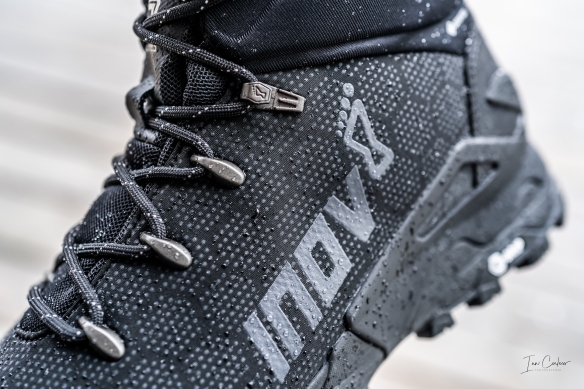
When I heard about the Roclite Pro G 400 I was immediately interested.
On first impressions this version of the Roclite does not look like any previous Roclite that has come before, the look and feel is completely different, especially in the stealth black look. Almost looks like a boot for the SAS or Special Forces.
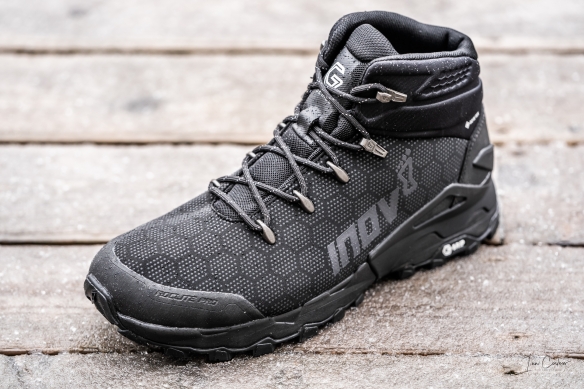
Weighing in at 421g for an EU44 the boot is also more substantial than previous incarnations. But I need to clarify here that the new Roclite Pro G 400 is designed for a different purpose in my opinion. It is much more akin to a normal hiking boot but at a fraction of the weight.
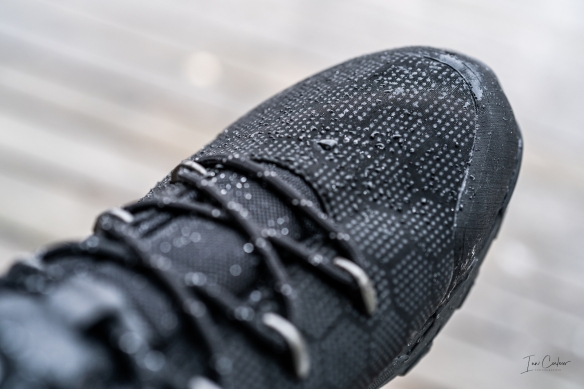
The fit scale is 4 just like the Roclite G 370 listed above, however, I would disagree here. The G370 is more of a 3 fit and the new G 400 a 4. There is a distinct difference in feel between the two boots, the G400 most definitely allowing for more toe splay.
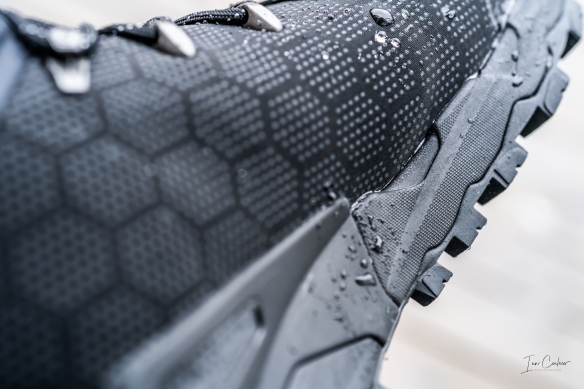
Drop is 8mm which is ideal for long days, the lugs are 6mm which provide great grip on a multitude of surfaces, especially with the addition of Graphene which extends outsole longevity. Cushioning is notably plush with 12mm at the from and 20mm at the rear.
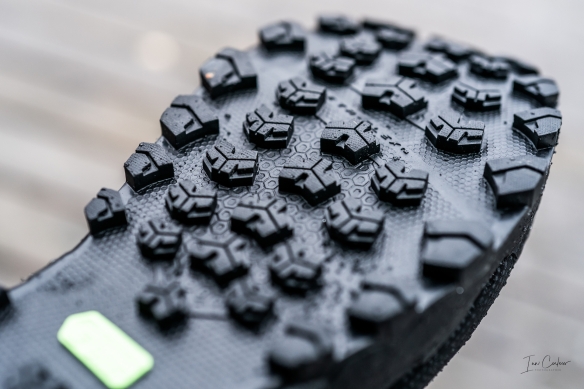
Like the G 370, the G 400 is Gore-Tex and this does a great job of protecting against the elements, especially wet, mud and snow. The weak point is always where the shoe stops and quite simply, if water or snow goes over the top of the shoe, you will get wet feet. This is where Gore-Tex can be a problem; there is no way for the water to escape! Therefore, a key recommendation, from experience, is to use Merino socks that manage to retain heat and warmth when wet. Use Nylon socks and you risk cold/ wet feet. Merino wicks sweat excellently too… Also, a risk with a Gore-Tex product as they are obviously warmer.

The upper uses Schoeller® ceramic-coated fabric which is an abrasion-proof, heat resistant fabric which sees ceramic particles – said to be as hard as diamonds – coated onto polymers for applications in the likes of protective, outdoor and military apparel. In simple terms, this fabric is incredibly durable to the wear and tear that one would encounter in extreme and harsh environments.
NOTABLE POINTS
There are many notable differences in comparison to the G370 and like I said previously, I see the two boots having different uses with some crossovers.
The G370 for me still feels like a run shoe. It laces up like a run shoe, feel for the ground is like a run shoe and the overall structure is more shoe like – there is less shoe if you know what I mean.
The G400 is considerably more robust in key areas:
The toe bumper is harder and more substantial.
The laces start higher up the shoe keeping the all-important flex area behind the metatarsals free.
The lace eyelets are solid/ robust metal with 5 on each side, the upper 2 have the inov-8 foot on, a nice touch!
The tongue is gusseted and maybe(?) a little more padded.
The heel protection is more substantial and padded.
Support for the heel area is considerably more reinforced and spreads down the left and right side of the shoe.
Cushioning is increased.
The outsole is completely different.
The G400 is a lightweight hiking boot that manages to combine all the great features of the previous models and then beef them up in a more robust package.
IN USE
The G400 works alongside one of the other Roclite boot models, be that the G 286, G 335, G 345 or the G 370 but does not replace them. Important to consider that the choice provided (G 286, G 335, G 345 or the G 370) all have different drops, fit, uppers and cushioning, so, that is also an important factor.
The G 400 is just a great all-round boot that is light enough for fast hiking, fastpacking, daily jaunts and day-to-day adventures. It manages to combine all the features and support of a boot double the weight. By way of example, I have a pair of lightweight Haglofs which are still over 100g heavier per shoe without the level of protection the G 400 offers.
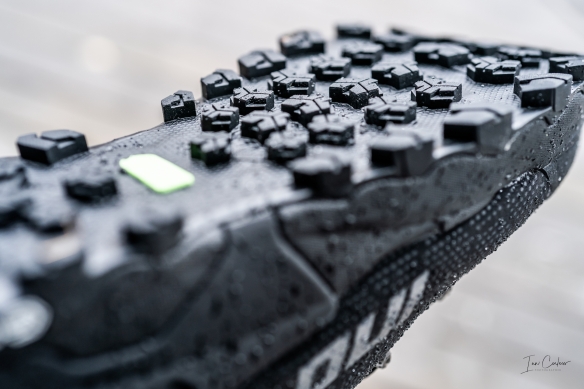
I have been using the zero drop Terraultra G270 run shoe and although the outsole configuration is different, the grip is comparable with comprises coming in very sloppy mud – the lugs are just not aggressive enough for these conditions and I would not expect them to be. This outsole needs to perform on a multitude of surfaces, and it does that exceptionally well.
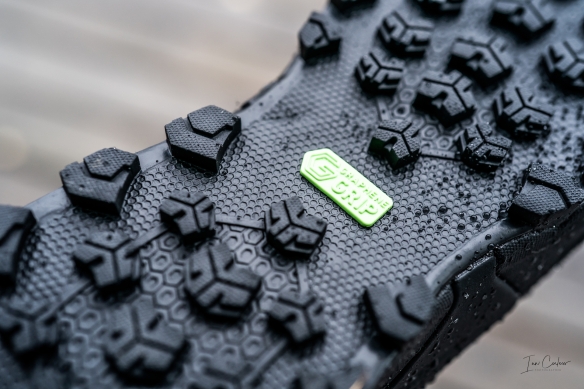
The cushioning is very notable and on a couple of long days this proved to be really welcome, especially with the 8mm drop.
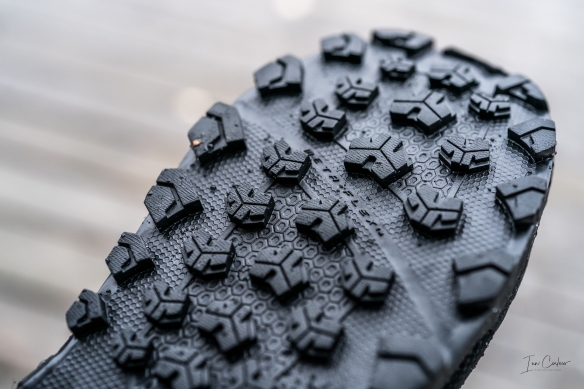
The shoe has ‘Meta-Flex’ which is designed to allow the front of the shoe to bend behind the metatarsals for that all-important propulsive phase. In the G 370 this works really well with plenty of flex. The G 400 less so. The sole is much stiffer, and it is here that there is a notable difference between say the G370 and the G 400 and why the G 370 feels more like a run shoe and the G 400 like a boot.


Sliding one’s foot into the shoe, it feels plush and the room in the toe box is notable. The lacing is fixed for the first 3 eyelets and the top 2 are open allowing ease for tightening, loosening or different lacing configurations. With the laces pulled tight and adjusted around the ankle, the foothold is spot on and the padding is superb. The back of the shoe drops away slightly avoiding risk of irritation on the achilles.
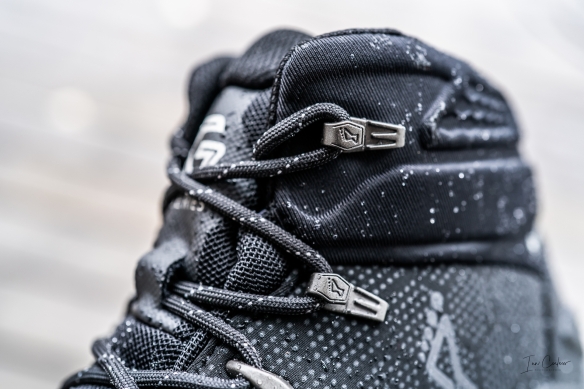
The back end of the shoe is beefy with a great deal of support to help reduce ankle roll. This is really noticeable to the G370 which has minimal additional support. Again, this is the run shoe v boot comparison.
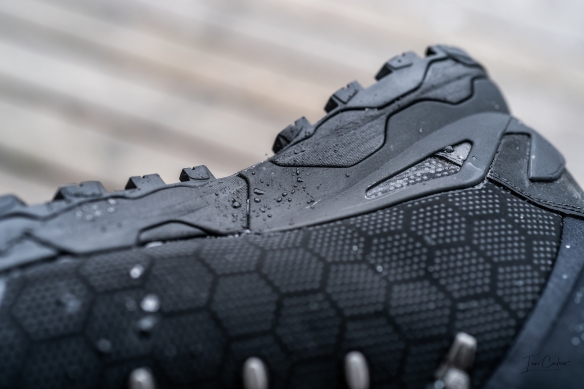
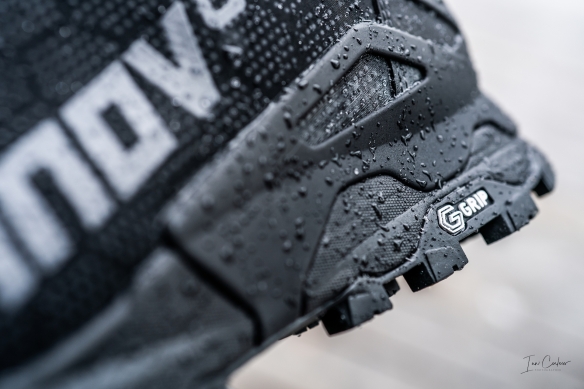

CONCLUSIONS
The G 400 is a really great boot that is absolutely ideal for long mountain days when you need all the support and features of a traditional boot but in a considerably lighter package. It has great grip, durable upper, great comfort and superb weight. It’s hard to find a fault, especially when one compares to the competition.

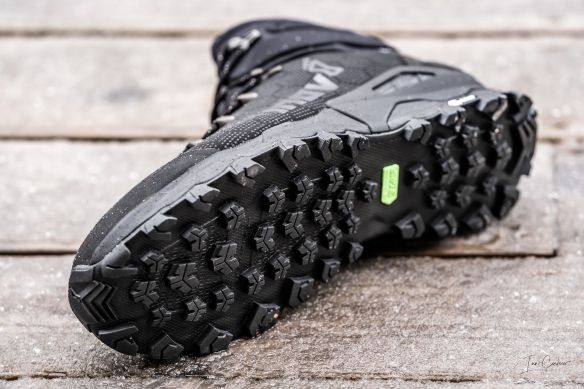
Despite all of the above, the G 400 would not replace my G 370’s which feel lighter, faster and more like a run shoe.
Quite simply, I am in the fortunate position to have both and I can gladly mix between the two.
So, if you can only buy one, which should you go for?
If you are primarily a runner looking for a durable winter solution for all elements that will allow you to still run and cover ground fast, then one of the G 286, G 335, G 345 or G 370 models will more than likely be preferable. Make sure you check cushioning, drop and other key features.
If you are a hiker or fastpacker who will do a little running, the G400 would be a better choice and serve you for a multitude of uses.
Ultimately, whichever way you go you will win. The inov-8 boots have worked well for me for the last 2-years and the new G 400 is working exceptionally well now alongside my G 370’s.
Please support this website. I believe everyone deserves to read quality, independent and factual articles – that’s why this website is open to all. Free press has never been so vital. I hope I can keep providing independent articles with your help. Any contribution, however big or small, is so valuable to help finance regular content. Please support me on Patreon HERE
Follow on:
Instagram – @iancorlessphotography
Twitter – @talkultra
facebook.com/iancorlessphotography
Web – www.iancorless.com
Web – www.iancorlessphotography.com
Image sales –www.iancorless.photoshelter.com

